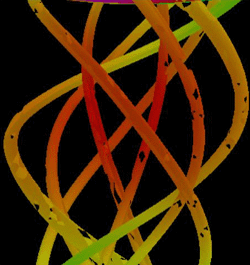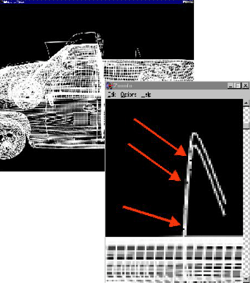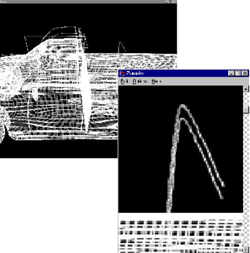Image Accuracy & Quality
Throughout this entire review the cheaper GeForce has been more or less trampling the GVX1 in the performance tests, yet we haven't praised NVIDIA's creation for being a true savior to the workstation graphics community. The fact of the matter is that when you're dealing in high end professional 3D rendering applications design integrity and thus image accuracy/quality are much more important than performance.
If the design you're creating is improperly displayed the ramifications of sending that design to production without constantly checking over your work are horrendous. 3Dlabs has taken the time to make sure that their OpenGL implementation is solid and that there are no such flaws in their drivers that would result in inaccuracies in the actual display of rendered images.
The exact opposite is true for games. If one or two pixels are out of alignment, or if a texture appears incorrectly, then the consequences are minimal. The game may not look "perfect" to a well trained eye, but other than that, no one gets hurt. It is this reasoning that supports the fact that the GeForce, in spite of its more than stellar performance, cannot compete with the GVX1 on the level of image accuracy and quality, two of the most important facets of any professional 3D design.
With the ProCDRS-02 viewset under SPECviewperf, part of the outputted results are percentages of pixels that are different from the original image. These percentages help to calculate how bad the inaccuracies of the rendering are. In our tests, the GeForce came out with around a 1% error for each test while our GVX1 test card averaged very close to 0.0%. While 1% may not seem like a lot, 1% in the design of a complex building or mechanical part can be the difference between a successful one and a failing one.
3Dlabs actually provides some very nice examples of these inaccuracies provided by the GeForce, as well as other cards that attempt to compete with the GVX1 in the high end arena. The quality comparison page is located here, but for your convenience here are the shots comparing the GeForce to the GVX1 directly. In our tests we noticed very similar results:
|
GeForce
256
|
Oxygen
GVX1
|
 |
 |
|
Note:
Missing polygons destroy model integrity
|
|
|
|
|
|
Note:
Missing pixels dropped due to rendering inaccuracies
|
|
 |
 |
|
Note:
Missing pixels between line segments fail to meet the Viewperf standards
of quality
|
|
This is a very big problem, and regardless of what performance a card may offer, in a professional environment, issues like these cannot be ignored.










3 Comments
View All Comments
evilpaul666 - Wednesday, October 14, 2020 - link
First!Railgun - Thursday, October 15, 2020 - link
Welp, if we’re going to be children...First is worst. Second’s best.
domboy - Thursday, October 15, 2020 - link
Reading this all these years later I realize several things. I miss- single slot cards
- having more than just two gpu vendors
- video cards with green PCBs
Good old PCI bus. I don't miss AGP though... glad PCIe came along to to allow one standard for all add-on cards.